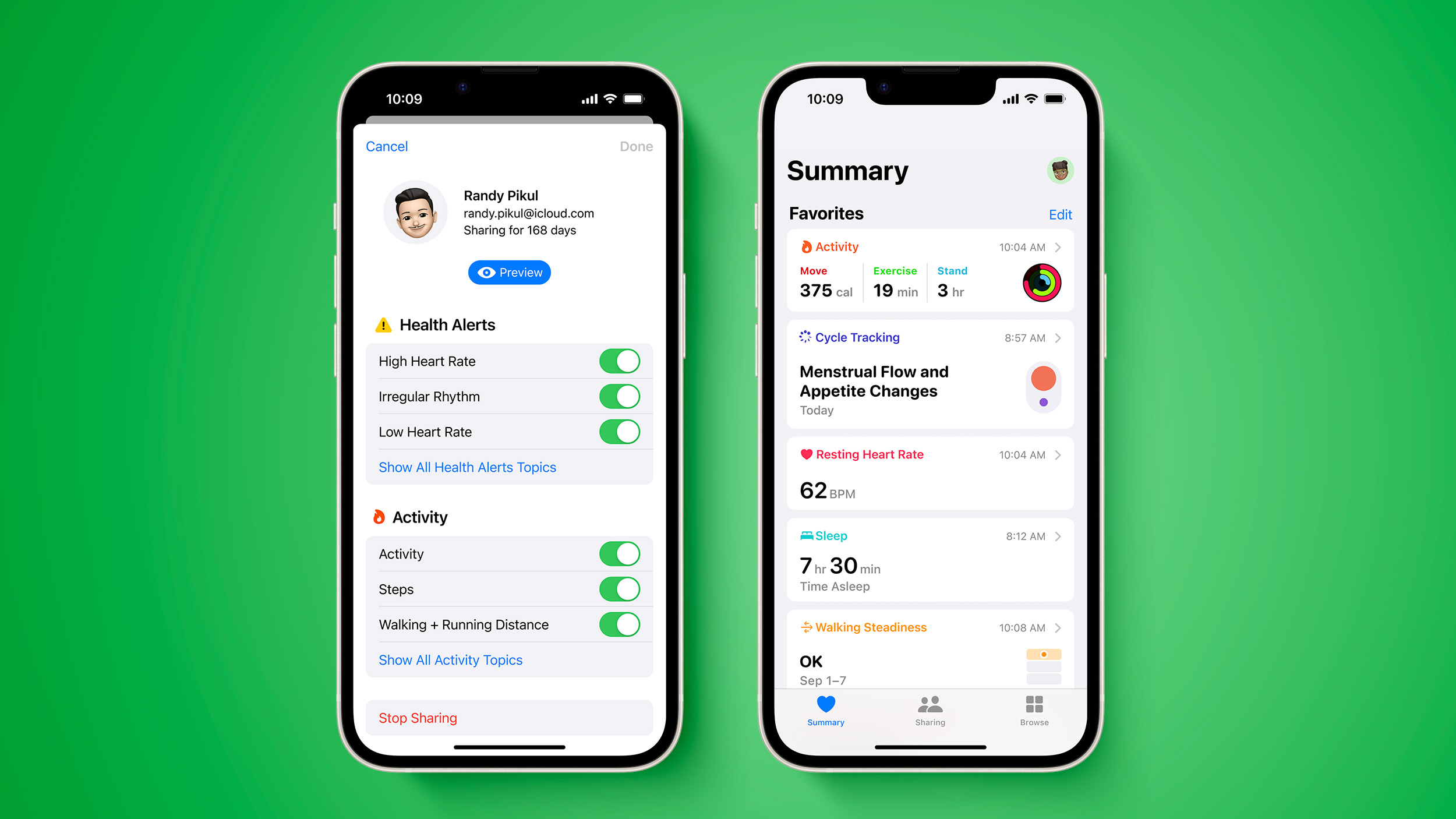05.24.2023
Apple is launching a new ad campaign today featuring the company's emphasis on health data privacy, headlined by a humorous new commercial voiced by actress and comedian Jane Lynch. The
The new campaign centers around the fact that with people knowingly and unknowingly sharing more and more about themselves online, protection of private health information has become an increasingly important issue. With Apple's built-in privacy protections across its devices and services, the company is seeking to reassure users that their health data remains secure within Apple's ecosystem.
Apple cites four pillars of privacy that apply both generally at Apple and specifically regarding health data:
- Data minimization: Only the bare minimum of health data is ever transmitted to Apple's servers, reassuring users that the vast majority of the data can not be compromised.
- On-device processing: Related to the data minimization pillar, Apple has intentionally built its products and services to perform as much data processing as possible directly on users' devices, limiting the data that needs to be sent to Apple in the first place. For example, your health highlights and trends displayed in the Health app on your iPhone are all processed on your device, which means Apple can't see them even if it wanted to.

- Transparency and control: Apple says that data is only shared with explicit user permission, and the company has built clear permission prompts to give you fine-grained control over what health data you share with whom, as well as provide reminders about the data you are sharing. With HealthKit, third-party developers seeking to access your health data must provide rationale for needing that access, must include a privacy policy, and may not use your health data for advertising purposes or sell it. Any health data these apps receive via HealthKit goes directly to the apps and does not let Apple see it as an intermediary.
- Security: All health data is encrypted on device, with the exception of Medical ID data that can be displayed on your iPhone's Lock Screen to assist first responders and others who may need to assist you in an emergency. For users have turned on two-factor authentication and a device passcode, health data transmitted via iCloud is end-to-end encrypted, meaning that only you can decrypt it with a device that's also logged in to your account, and Apple can't see it unless you explicitly choose to allow it.
Apple's new health privacy ad campaign will be running in 24 regions around the world across broadcast media, social, and billboards this summer. The company has also published a white paper with an overview of how the Health app and HealthKit protect your privacy.
Tag: Apple Ads
This article, "Apple's Latest Ad Campaign Takes a Humorous Look at Health Data Privacy" first appeared on MacRumors.com
Discuss this article in our forums
You may also be interested in this
‘The Greatest’ showcases …
05.25.2023
Apple believes accessibility is a human right. Innovative features like Door Detection, Sound Recognition, Voice Control, and more are designed to let you use your Apple devices in ways that
Win a portable magnetic 3…
01.22.2024
Three lucky winners who enter the giveaway will receive a Kuxiu X55 3-in-1 Foldable Wireless Charger and Stand. (via Cult of Mac - Apple news, reviews and how-tos)
Apple stock hits all-time…
06.05.2023
Apple stock (AAPL) hit an all-time high today, topping $183.49, ahead of today’s WWDC keynote where it is expected to announce iOS 17, new Macs, and its first mixed reality
How to get the official C…
05.18.2023
Scammers have flooded the App Store with fake or buggy ChatGPT apps, but OpenAI has recently launched an official version with capabilities to handle text and speech queries. Here's where
Best Buy Upgrade Plus let…
06.14.2023
The Upgrade Plus offer applies to both the latest 11-inch and 12.9-inch iPad Pro. | Image: Dan Seifert / The Verge Best Buy is expanding its monthly financing program, Upgrade
Truecaller iOS Update Rol…
01.22.2025
Popular caller ID app Truecaller is rolling out an update that brings real-time caller ID support to its iOS subscribers. Apple introduced Live Caller ID Lookup in iOS 18, allowing
Get an M1 Pro or M1 Max M…
05.21.2023
Limited M1 Pro and M1 Max MacBook Pro models are still in stock, with deals knocking up to $1,300 off entry-level and loaded configurations.Save up to $1,300 on MacBook Pros.If
The Success of Apple Visi…
01.25.2025
Apple’s Vision Pro has made significant waves in the tech world, marking a pivotal moment in the evolution of mixed reality (MR). This cutting-edge device blends augmented reality (AR) and


